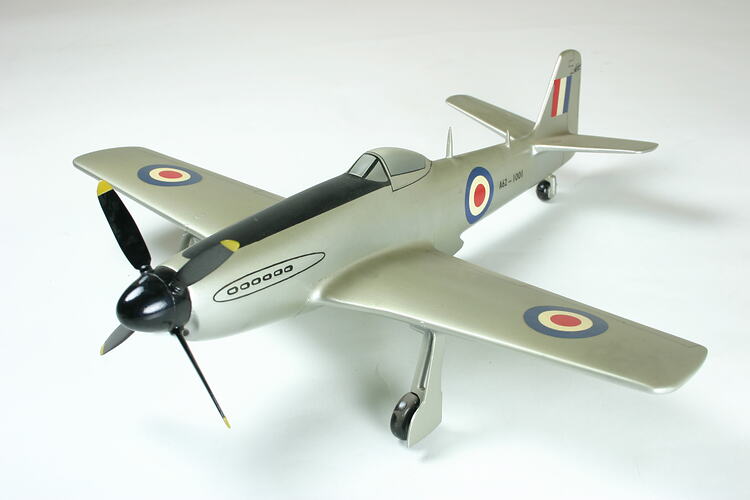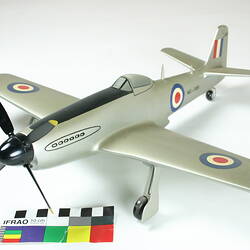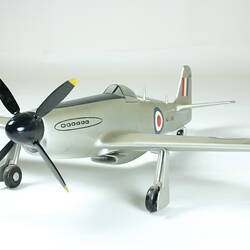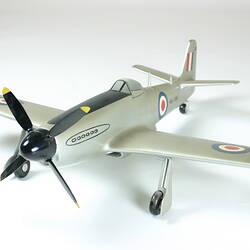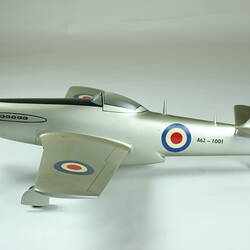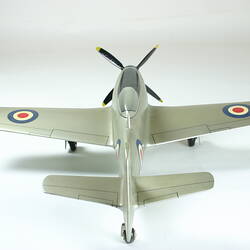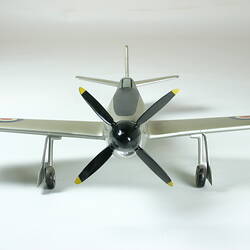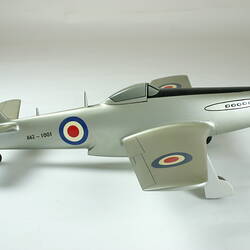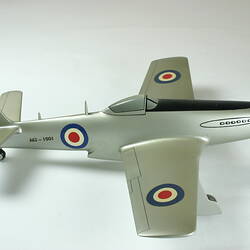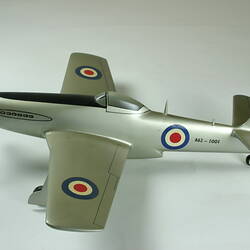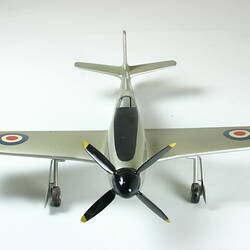Summary
Aircraft History:
Having designed and built the stop-gap Boomerang fighter in 1942, the Commonwealth Aircraft Corporation (CAC) at Port Melbourne responded to RAAF Specification 2/42 for a high performance fighter aircraft. Chief Designer for the CA-15 project was Fred David who had designed the Boomerang. Funding for construction of a CA-15 prototype was approved in late 1942 but problems with the supply of the proposed Pratt & Whitney R-2800 radial engine caused delays and a Rolls-Royce Griffon V12 liquid-cooled engine was substituted. The 1943 decision for CAC to licence-build the Mustang fighter placed a lower priority on the project and it was cancelled in September 1944. Despite this, CAC Manager Lawrence Wackett kept the project going to validate the considerable aerodynamic testing already completed. The first flight took place at Port Melbourne on 4 March 1946. The CA-15 (serial no. A62-1001) was then tested by the RAAF at 1 Aircraft Performance Unit, Laverton in 1948. The introduction of jet fighters made the CA-15 obsolete as a fighter and damage in a landing accident led to the scrapping of the prototype in 1950.
Model History:
This 1:30 scale model of the CA-15 prototype was donated to the Museum in 1954 by the Commonwealth Aircraft Corporation. The Museum acquired the model from the Commonwealth Aircraft Corporation in 1954 at the conclusion of the 'Jubilee of Flight' exhibition at the former Science Museum of Victoria in 1953-54. It had been loaned to the Museum for the exhibition but was then donated by CAC Manager Sir Lawrence Wackett. It is apparently a factory model used for promotional or display purposes.
More Information
-
Collecting Areas
-
Acquisition Information
Donation from Commonwealth Aircraft Corporation, 05 Feb 1954
-
Manufacturer of Item Modelled
Commonwealth Aircraft Corporation, Melbourne, Greater Melbourne, Victoria, Australia, 1945-1950
-
Brand Names
-
Classification
Air transport, Aircraft, Model propeller aircraft - military
-
Category
-
Discipline
-
Type of item
-
Overall Dimensions
365 mm (Length), 365 mm (Width), 138 mm (Height)
-
Model Scale
1:30
-
Keywords
Aeroplanes, Fighters, Military Aircraft, Model Aeroplanes, Scale Models, Wars & Conflicts
